NOTICE! This is a majorly revamped version of a piece from the summer of 2016 — with enhanced content — to be followed in close succession by a suitably elaborate history of Gene Rosenthal and Adelphi Records. although sandwiched in between will be a history spotlight on Track’s Chief Engineer, Bill McCullough.
Perhaps someday in the not-too-distant future, Silver Spring will organize an event to celebrate all the music history attached to Track Recorders, a sound studio upstairs in the Cissel-Lee Building (directly above the present-day Urban Butcher [R.I.P.]) on Georgia Avenue in Silver Spring, Maryland – just over the DC line – that saw action in the 1970s, ’80s & ’90s. Stevie Nicks may have been originally inspired by a name on an interstate sign, but as it turned out, her instincts were correct: Silver Spring in the mid-to-late 1970s was a focal point for a fair amount of musical magic, as indicated in the hyper-linked list below.
Downtown Silver Spring’s last Spanish Colonial Revival –
Track Recorders on the 2nd floor
DC-area historian, Marcie Stickle, writing in 2009 about the history of the Cissel-Lee building, notes that this “significant two-story brick structure was Spanish Colonial Revival, all the ‘rage’ at the time. With its unique black slate canopies angled around two sides of the roofline, the Cissel-Lee Building was the only remaining such structure in all of the [Central Business District].”
Notable Moments in Track Recorders’ Music History
(chronologically speaking)
- The Young Senators‘ classic funk 45 – “Jungle” – was recorded in 1970 at Track and reissued in 2016 (with picture sleeve) on Chicago’s Numero Group / Innovation. The A-side, according to The Beat! Go-Go Music from Washington, DC (thank you, Ken Giles!) hit number one on local and regional R&B music charts and led the band to Eddie Kendricks, who used them as musical support for his first solo tour after leaving The Temptations.
- Ralph Stanley & the Clinch Mountain Boys made a series of recordings at Track between the years 1971 and 1976 that would later be issued on 1991 CD compilation Bound to Ride.
- Pioneering DC Christian rock band – Sons of Thunder – recorded 1972’s Day Follows Night at Track.
- The Soul Searchers‘ 1972 Sussex album We the People – featuring DC legend, Chuck Brown – was recorded at Track (a sealed copy fetched $405 this past October). Vocalist/guitarist Brown and keyboardist/trombonist John Buchanan co-wrote the title track, which served as the group’s first 45.
“We the People” by The Soul Searchers (1972)
Recorded at Track Recorders – Silver Spring, MD
“We the People” (not to be confused with the Allen Toussaint composition) hit #40 on the R&B Chart, spending a total of six weeks on the chart. Soul Brother would reissue We the People for the UK market in 2006.
- Scacy Sound Service‘s heavy funk 45 from 1972 “Sunshine (Pt. 1 & 2)” – recorded at Track – changes hands for up to three figures at auction (and was sampled by Outkast in 2006 for “Mighty O“).
- Anacostia‘s Van McCoy-produced 45 for almighty Columbia “On and Off (Pt. 1)” (which enjoyed release in Australia) was – according to this 1972 Billboard news item – all but certainly recorded at Track.
- Al Brown‘s funky 1973 instrumental A-side – “The Whip” – (45 sought after in the UK) was laid down at Track.
Track Recorders 45 History Spotlight:
Julius Brockington
Old Sounds Refashioned Anew
Julius Brockington‘s 1973 landmark 45 — “This Feeling” b/w “Cosmic Force” — would be yet another 7-inch record laid down at Silver Spring‘s Track Recorders that has been able to fetch three figures at auction within the last five or so years.
“This Feeling” b/w “Cosmic Force”
Julius Brockington
“This Feeling,” points out Soul Sides, enjoys the distinction of being reissued the following year, in 1974, as a two-part “Freedom” remix that kicks off with an ever-so-slightly menacing mini-Moog line. Indeed, is this one of the earliest instances – as Soul Sides asks – “where a seven-inch single got remixed onto 7-inch again”?
Prior to releasing this single (quite possibly the Burman label’s one and only title), Brockington recorded three full-length albums for Today Records – 1972’s Sophisticated Funk & The Brockingtons, plus 1973’s The United Chair – that enjoyed distribution in France.
Thirty years later, “alternative” hip hop group Jurassic 5 would sample “This Feeling” to trippy effect on “Freedom” from 2002’s Power in Numbers album:
“Freedom” by Jurassic 5 (2002)
45 label says –
Recorded in “Silver Springs”
Remixed in “Phila”
Released on “Balto”-based label
Who knew, in 1973, the global reach Brockington’s Silver Spring-based sounds would enjoy – including Japan, France, and Romania – over 40 years later?
*
- Sir Joe Quarterman & Free Soul‘s debut album – which saw release in 1973 in the US, UK, Venezuela, Spain, France, Italy and Japan – was recorded at Track, as well as Muscle Shoals Sound Studio. Kick-off track “(I Got) So Much Trouble In My Mind” would be one of Billboard‘s Top Soul Single Picks for the week of December 1, 1973.
- Claude Jones (“Warrenton, Virginia’s answer to the Grateful Dead“—a hippie band whose members all lived together at a rural outpost they called “The Amoeba Farm”) recorded their 5-track EP Sykesville in 1973. The title track, as YouTube commenter 50lbsofheadlines wryly observes, sounds “as if ‘The Weight’ had been written by Marylanders” — check out the accompanying video.
- Pentagram recorded their fuzzed-out cover of “Under My Thumb” — with inspired dual guitar solo — at Track in 1974, produced by Skip Groff and Bob Fowler. Copies of the original 45 have sold at auction for over five hundred bucks.
- Danny (Gatton) and the Fat Boys [Billy Hancock & Dave Elliott] would record their debut album in 1974 at Track and issue a 45 whose B-side (“Harlem Nocturne“) made folks sit up and take notice of the amazing new guitarist.
Track Recorders History Spotlight:
Johnny Castle
Johnny Castle, who has performed and/or recorded with just about every musician — Johnny Gimble, Jimmy Arnold, Joe Maphis, Screamin’ Jay Hawkins, John Lee Hooker, Elvin Bishop, Mac Wiseman, J.D. Crowe, Doug Sahm, Root Boy Slim, Catfish Hodge, Danny Gatton, Martha Hull, Tex Rubinowitz & Eddie Angel, Switchblade (Ratso, Angel & Jim Dougherty — later Mark Wenner & Steuart Smith), Bill Kirchen & Too Much Fun, John Tichey & Andy Stein, the Twangbangers (honky tonk supergroup – Redd Volkaert, Dallas Wayne & Joe Goldmark), the Thrillbillys (his own band), and (currently) The Nighthawks, to name a few — has logged serious time at Silver Spring’s Track Recorders.
Johnny Castle started his musical career in the DC area with Crank – including guitarist Geoff Richardson – a popular hard rock outfit (vintage photos) who once opened for Hendrix and The Allman Brothers. Crank recorded at Track during the studio’s early years, when the band was able to get a sweet deal on a package that also included promotional materials. No recordings were ever released, but Barry Richards got hold of a tape of one song (“Used To Be Worried”) and, played it so often on his radio show, according to Castle, it made the Top 10 one week.
Johnny Castle would go on to record a number of other sessions at Track:
- Three albums with Eddie & Martha Adcock‘s II Generation for Mt. Airy, Maryland-based Rebel Records: 1974’s Head Cleaner, 1975’s We Call It Grass, and 1976’s Second Impression.
- Switchblade‘s 45 “She Makes Me Rock Too Much” b/w “Tight Blue Jeans” (notable for its marriage of reggae rhythm with a rockabilly feel) from 1981 — with Ratso, Dougherty & Ste(w)art Smith. The A-side features a blood-curdling scream near song’s end that was recorded in isolation and nearly sent a piano tuner, who was intensely focused on his work, into cardiac arrest. Picture sleeve images and recording credits at this link.
- Page Wilson‘s 1983 album, Road Tired, Wired and Ready, which features musical support from Mike Auldridge, Steuart Smith, Eddie & Martha Adcock, Robbie Magruder, Akira Otsuka & Mark Greenhouse (harmony vocals & recording engineer), among others.
- Interrobang, featuring a young Linwood Taylor – “Washington, DC’s premier blues man” – who tells Zero to 180 that Castle played on two songs (“Suspicious” and “Last Goodbye“), one of which being a runner-up winner on a DC101 home tapes contest, resulting in free studio time at the Warehouse in Philadelphia!
- Numerous “vanity” sessions on self-released recordings by local-area artists.
Archaic Punctuation –
Castle would also join forces with Mark Greenhouse (guitars/keys/vocals), Steuart Smith (guitar), Pete Ragusa (drums), and Mitch Collins (keyboards) to record four songs at Track as a fun recording side project known as Dog Days Revue.
- The Seldom Scene – Mike Auldridge (dobro), John Duffey (mandolin), Ben Eldridge (banjo), John Starling & Paul Craft (guitar), and Tom Gray (bass) – would record 1974’s Old Train album at Track — with guest vocalist Linda Ronstadt on two back-to-back tracks: “Through the Bottom of the Glass” and “Old Cross Roads.”
- Mike Auldridge would enjoy musical support from Ricky Skaggs, David Bromberg, Doyle Lawson, Linda Ronstadt, and Lowell George (on “Everybody Slides“), plus members of The Seldom Scene, on 1974’s Blues and Bluegrass — recorded at Track, with engineering oversight by audio innovator, George Massenburg.
Silver Spring Music History Moment:
Linda Ronstadt at Track Recorders
This bit from Bob Kirsch’s “Studio Track” Billboard column in the April 27, 1974 edition:
“Bill Tate, owner of Track Recording, Inc. in Silver Spring, Md., reports that Linda Ronstadt was in recently for three sessions. Lowell George handled the production and also played on the sessions. George Massenburg handled the engineering. Columbia’s David Bromberg also played. Track has recently put in a new quadrasonic control room, complete with a custom built Neve console. David Harrison of Studio Supply in Nashville designed. Finally, local bluegrass group Seldom Scene was in working on sessions.”
- At least one song on Linda Ronstadt‘s Heart Like a Wheel album from 1974 was recorded at Track — thanks to The View from the Mantelpiece, I now know which one:
“[Linda] came down with the flu in 1974 while passing through Washington with a Jackson Browne tour and ended up staying behind to recover at the Bethesda house of John Starling, a member of the Seldom Scene whom she had met through her friend Emmylou Harris. A snowstorm came, and there was a houseful of musicians, one of whom was Paul Craft, who wrote ‘Keep Me From Blowing Away,’ which she decided to record as soon as she could.” [based on Ronstadt’s 2013 memoir, Simple Dreams: A Musical Memoir]
- Emmylou Harris‘ Pieces of the Sky album was recorded at Track [as well as the Enactron Truck] in 1975, with musical backing from James Burton (guitar/dobro), Ray Pohlman (bass), Ron Tutt (drums), Ben Keith (steel guitar), Glen Hardin & Bill Payne (piano), Byron Berline & Ricky Skaggs (fiddle), and Bernie Leadon (banjo/guitar), among others.
- One-time Stevie Wonder bassist and accomplished reed player, Andrew White, recorded 1974 album Passion Flower — one of Dusty Grooves‘ “favorite 70s albums” — at Track. Curiously, a different drummer (Bernard Sweetney of the Reuben Brown Trio) is listed on Discogs than the one (Keith Killgo – of DC’s Blackbyrds) identified on the back cover above.
- Bill Holland & Rent’s Due If It Ain’t One Thing was recorded & mixed substantially at Track in 1974-75 and released 1975. Blues Art Studio informs me that Holland had been keyboardist for The Nighthawks prior to forming Rent’s Due. [more info in upcoming history of Adelphi Records]
- THIS JUST IN: Musical encyclopedia and beloved WHFS disc jockey “Weasel” blew Zero to 180’s mind with the bombshell that the mighty NRBQ recorded two songs at Track Recorders in 1975, one of which – “Cecilia” – would end up on 1977’s All Hopped Up.
- J.D. Crowe and the New South‘s debut album, featuring the stellar musicianship of J.D. Crowe, Jerry Douglas, Tony Rice, Ricky Skaggs, and Bobby Slone – was recorded January 1975 at Track. The International Bluegrass Music Association’s “World of Bluegrass” convention in 2015 would host a panel discussion – “How J.D. Crowe and the New South Changed Bluegrass Music” – that would identify the band’s 1975 Rounder debut as “one of the most influential bluegrass albums of all time,” and “known to most simply by its stock number: 0044.” Bill Nowlin’s three-part history, “The Story of 0044,” is part of the Further Reading bibliography at piece’s end.
- Tony Rice‘s California Autumn album was engineered by Bill & Fran Tate at Track, and mixed at Baltimore’s Blue Seas by George Massenburg in 1975 (LP would see release the following year in Japan). Rice would enjoy backing by The Seldom Scene, with fiddle and mandolin assistance from Ricky Skaggs, and dobro work by Jerry Douglas on two tracks – “Billy in the Low Ground” and “Good Woman’s Love” (the latter with banjo work by J.D. Crowe).
- Powerhouse – featuring guitarist Tom Principato – recorded 1975’s Night Life at Track (in which Bullmoose Jackson of King Records fame was pulled out of retirement for a guest vocal). [listen to entire album]
- Liz Meyer‘s Once a Day album – recorded 1975-1977, though released 1982 – features guest performances from Emmylou Harris, Buddy Charleton, Mike Auldridge, Tom Gray, Lance Quinn, & Winnie Winston among others [profiled in upcoming history of Adelphi Records].
- Banbarra‘s classic 1975 A-side “Shack Up” — a sampler’s dream (A Certain Ratio, Public Enemy’s Bomb Squad, 3rd Bass, Stetsasonic, Gang Starr, Kool Keith, and Happy Mondays, et al.) — was recorded at Track and produced by Lance Quinn.
- Stephen Spano‘s 1975 album Eye to Eye on Adelphi Records (featuring kick-off tune “Love Is the Sound“) was recorded, in part, at Track and today commands up to three figures at auction [more info in upcoming history of Adelphi Records].
- Gloria Gaynor‘s 1975 album Experience was recorded, in part, at Track (though listed in the credits as being located in ‘DC’ – same with Banbarra’s 45 and Clovers’ below). MGM would issue Gaynor’s version of “How High the Moon,” with “My Man’s Gone” (written by Gaynor) as a non-LP B-side.
- Gloria Gaynor would return to Track the following year (though now signed with Polydor) for I’ve Got You — both albums engineered by Tony Bongiovi (cousin of Jon).
- The Clovers – one of Ahmet Ertegun’s favorite groups from the doo-wop era – recorded a 45 at Track in 1975 that was written by Billy Hancock and co-produced by Hancock and Obie O’Brien.
- The Reuben Brown Trio Featuring Richie Cole‘s Starburst album on Adelphi was recorded at Track in 1975 and released 1976 [more info in upcoming history of Adelphi Records].
- Black Heat‘s farewell album, 1975’s Keep on Runnin‘ [listen to title track] — recorded at both Track & Atlantic Records studios — was issued in Europe in 2016, three years prior in Japan). Soul version of “Drive My Car” would be issued by Atlantic as Black Heat’s final 45.
- Jimi Hendrix‘s posthumous LP Midnight Lightning (with numerous session players overdubbed) was produced, in part, at Track and released in November, 1975 [*special bonus feature at the end of this piece]. Track would also be one of three studios used to produce Hendrix’s Crash Landing in similar fashion, released eight months earlier in March.
- THIS JUST IN: Bill Keith’s 1976 album Something Auld, Something Newgrass, Something Borrowed, Something Bluegrass, which kicks off with a fresh arrangement of the classic Stones song “No Expectations,” features a heavy-hitting supporting cast, including Tony Rice (guitar), David Grisman (mandolin), and Vassar Clements (fiddle), among others.
- O’Donel Levy recorded Windows – engineered by Tony Bongiovi – in August, 1976 at Track, with musical support from Randy Brecker, among many others. [listen to album]
- Skip Mahoaney & the Casuals recorded 1976’s Land of Love (listen to title track) – whose eight songs would be issued as four single releases that same year – at Track.
- All of The Nighthawks‘ albums recorded for Adelphi Records involved Track Recorders to some degree: 1976’s Open All Nite, 1977’s Side Pocket Shot and 1978’s Jacks and Kings (with members of the Muddy Waters Band) were all engineered and mixed at Track — meanwhile, 1976’s Nighthawks Live was recorded at Bethesda’s Psyche Delly by Track recording engineer Obie O’Brien (and Roger Byrd of Sonority Sound), 1980’s Full House included unreleased tracks from Jacks and Kings, and 1982’s Times Four included 1977-79 studio sessions laid down at Track.
Track Recorders Musical Spotlight:
The Nighthawks
Mark Wenner
Harmonica ace, Mark Wenner, certainly knows the inside of Track Recorders as “founding father” and remaining original member of The Nighthawks. Around the time The Nighthawks (with Jimmy Thackery on guitar, Jan Zukowski on bass & Pete Ragusa on drums) were recording their first album for Adelphi Records in 1976, Wenner recalls Obie O’Brien (engineer/producer) and Lance Quinn (studio guitarist) in the throes of recording intensely-layered (e.g., banjo lines) disco productions for the likes of Gloria Gaynor.
Younger readers may not realize that hewing to a classic blues (but “well-recorded”) sound was going against the grain at the time, but Open All Nite – four musicians, no external players – ending up being reasonably successful from a sales standpoint, Wenner tells Zero to 180. (1976, incidentally, would also be the year when Obie O’Brien would press Wenner and members of the Rosslyn Mountain Boys into service to record a novelty single with vocalist Bro Smith – “Big Foot” – that reached as high as #57 in the pop chart!)
c1976 Jonas Cash Promotions (picture sleeve)
“Engineered by Obie” – 45 label
The band’s next studio effort, however, Side Pocket Shot – a ‘Revolver’ concept, with each song different from the other – was another kettle of fish altogether, with Billy Price’s Rhythm King Horns, for example, spilling out out of a limo one day with a bottle of whiskey and whatnot, recording their horn parts and then immediately rolling back out of town. Not to mention the addition of pedal steel, percussion, and backing vocals. In the wake of Obie O’Brien’s departure, however, the album would be engineered by Cap’n Jon and Gerry Wyckoff at Track.
Opening for Muddy Waters for three different runs at DC’s famed Cellar Door – in conjunction with block booking at Track Recorders – facilitated the band’s crowning achievement, Jacks and Kings, with Muddy Waters’ band members, Pinetop Perkins (piano), Guitar Jr. (i.e., Luther Johnson), Bob Margolin (guitar), plus Dave Maxwell (kick-off track: “For You My Love“). Engineered by Bill McCullough and Gerry Wyckoff, Jacks and Kings would be a big seller for Adelphi and one that would prompt the band’s first major tour outside of the mid-Atlantic area — Chicago, Denver, Austin, New Orleans, and Kansas City, a key distribution point.
Wenner remembers Track as not only a great place to hang (e.g., a big party for Jacks and Kings, with a refueling stop at Little Tavern and more than one cinema run to catch Raging Bull), but also an adventurous place to ply his trade (e.g., “triple-mic’ing” his harmonica in a stairwell, recording it at three different levels).
The Nighthawks (who appeared as themselves in the second season of The Wire) are still raging strong today, with Johnny Castle (bass), Paul Bell (guitar), and Mark Stutso (drums). 2010’s Last Train to Bluesville, recorded live and acoustic on B.B. King’s Bluesville channel on Sirius/XM (Pete Ragusa’s farewell appearance), would win the band their first-ever Blues Music Award from the Blues Foundation, while 2015’s Back Porch Party features another well-received set of acoustic blues that mixes classics (e.g., Ike Turner’s “Matchbox” and Willie Dixon’s “Tiger In Your Tank”) with originals, such as Wenner’s “Guard My Heart” and Stutso’s “Down To My Last Million Tears.”
Q: How challenging was it to get permission from the Art Institute of Chicago to use the Edward Hopper painting on Open All Nite?
A: $60 fee and use of their slide, with no printing over the actual picture.
[Thanks to Linda Parker Photography for use of photo above]
- Bill Horton‘s free-form, Beefheart-esque Dancehall for Midgets from 1976 (sample: “Rages of Emptiness“) was assembled in 1976 at Track — album can trade at auction for three figures or more.
- Thomas Crawford‘s 1976 album The Peak Experience was recorded, in part, at Track, and one of two rather collectible albums for Bethesda boutique label, Integrated Performance Systems International Incorporated (e.g.,$216 paid for this LP at auction in 2015).
- In 1976, Del McCoury & The Dixie Pals would record three tracks at Track (including “Foggy River“) that would later enjoy release on 1991’s Classic Bluegrass CD compilation.
- Country Gentlemen‘s gospel album, Calling My Children Home, was recorded at Track between April, 1976 – August, 1977 (kick-off tune: “Place Prepared for Me“), as was 1976’s Joe’s Last Train and no doubt other albums released on Rebel Records (founded in Mt. Rainier, Maryland).
- Acclaimed bluegrass musician Jimmy Arnold recorded 1977’s Jimmy Arnold-Guitar at Track, with musical support from Johnny Castle, Ricky Skaggs, and Mike Auldridge, among others. [listen to entire album]
- Coup de Grass‘ 1978 album Rhythm and Bluegrass – on Adelphi Records – was recorded at Track (see “album spotlight” in upcoming Adelphi Records history piece). [listen to entire album].
- The Ramones‘ second album Leave Home from 1977 was mixed, in part, at Track.
- Root Boy Slim, one-time Silver Spring resident, with backing from the Sex Change Band and the Rootettes, would record 1979’s Zoom (whose classic cover was designed by Dick Bangham) at Track. RRoot Boy had been identified as Track’s ‘creative director’ two years earlier in Unicorn Times‘ October 1977 issue. “World War 3” b/w “Dare To Be Fat” would be issued in the US, as well as the UK, albeit with the two sides flipped! This just in: Root Boy’s 1983 album Dog Secrets – recorded at Track – would enjoy the addition of a bonus track, “Go Go Girls Don’t Cry” (thanks to John Simson & Dick Bangham), when reissued in 2010 on CD.
- Original Fetish‘s Warped 45 – “Standing in Line at Studio 54” b/w “I’m Glad That Elvis Is Dead” – was recorded in 1979 and engineered by Bill McCullough at Track (view original gatefold images of celebrities in caricature waiting at Studio 54 at this link). Dave Nuttycombe celebrates the 25th anniversary of the band’s dissolution in this 2005 piece for DC’s City Paper.
- Russ ‘n‘ Paul would record 1979’s See You in Court (a Billboard “recommended album“) entirely at Track, with musical support from Mark Greenhouse and Steuart Smith, among others, on such tracks as “Let It Come From Inside You.”
- Bill Blue Band — Two Adelphi LP releases recorded and mixed at Track:
Sing Like Thunder (recorded 1978, released 1979) and Givin’ Good Boys A Bad Name (recorded 1979, released 1980). [see upcoming history of Adelphi Records]. - Catfish Hodge‘s Bout With the Blues album (save for two tracks) was recorded by Mark Greenhouse and Bill McCullough at Track in 1980. At the time of the album’s release, interestingly, Catfish would form a new group – Chicken Legs – using members of his own band combined with “four of the five remaining members of Little Feat.” [see upcoming history of Adelphi Records].
- The Slickee Boys‘ winner 1980 A-side “The Brain That Refused to Die” was recorded at Track, (while the flip side “(Are You Gonna Be There at The) Love-In?” was recorded at Bethesda’s fabled Psyche Delly).
- Black Market Baby‘s forthrightly rocking A-side “America’s Youth” was recorded in 1980 at Track.
- Howard University‘s Jazz Ensemble (featuring Greg Osby) recorded one album each in 1979 and 1980 at Track.
- Gregory Charles Royal‘s 1980 single “Pain” b/w “Take a Ride to Heaven” (reissued in 2016 on Swiss label, High Jazz – and currently sold out) was recorded at Track. Royal, who would be invited by Art Blakey to join his Jazz Messengers while still a tenth-grader, later founded the New York Jazz Film Festival and currently serves as artistic director of DC’s American Youth Symphony.
John Simson’s Track History Spotlight:
Tori Amos
American University professor, John Simson — one-time recording artist who became a manager (Mary Chapin Carpenter, Switchblade) and thirty-year entertainment lawyer (Chuck Brown, Government Issue, Root Boy Slim), as well as frequent lecturer on music industry and copyright issues, Executive Director of SoundExchange, and Chair of the Board of the National Recording Preservation Board of the Library of Congress, among many other accomplishments — informed Zero to 180 that a teenage Tori Amos had recorded some of her earliest demos at Track Recorders.
The youngest person, at age five, to win a Peabody Conservatory scholarship, Tori (and her family) would later move from Baltimore to Silver Spring in 1972 so that her father could serve as pastor at Good Shepherd United Methodist Church in the Adelphi section of Silver Spring. As an underage performer, Tori would be chaperoned to Washington-area piano bars by her father, who would also mail tapes of her own original recordings to record labels.
Mark Greenhouse once played a demo cassette of demonstration recordings made at Track to John Simson, who was impressed enough with her talent to travel to Georgetown to hear Amos perform live. This Wikipedia page claims that “Baltimore” – submitted in response to a Baltimore Orioles theme song competition – was recorded in 1979 at Track, with guitar accompaniment by Max Welker. This past August, Welker would post an audio clip of a demo Amos made for “Walking With You” that is said to have been recorded at Track in 1980.
Curious coincidence — Julius Brockington was once signed to Today Records, a subsidiary of Perception Records: the label that released John Simson’s 1971’s album.
- The Muffins‘ album <185> – with Fred Frith in the producer’s chair, as well as performer – was recorded in 1980 at Track and reissued in 1996 on Silver Spring’s own Cuneiform! The band moves from longer to shorter form on this album, as evidenced by “Under Dali’s Wing.”
- Little Feat odds ‘n’ sods compilation, 1981’s Hoy-Hoy, includes tracks recorded at ten different studios, including Track — so says this catalog record for the version released in the Netherlands. However, I just discovered that the catalog record for the 1990 German release includes much more detailed recording info — but no mention of Track Recorders. Which raises the question: Did Little Feat (not just Lowell George) ever record at Track? Bill McCullough actually answered this question in September, 2016: Little Feat (as would The Allman Brothers and Kiss, et al.) recorded demos only for “fun” at Track.
- Harvey Reid‘s 1981 debut album Nothin’ But Guitar – his first of six for the Woodpecker label – was recorded at Track.
- Tommy Keene‘s Strange Alliance from 1982 – his debut LP – was recorded at Track (listen to title track). Album engineered by Mark Greenhouse & Jim Crenca and mastered by Bob Ludwig at Masterdisk.
- Iwabo‘s early-80s rootical 12-inch single “Reggae Down” b/w “Smile on Your Face” was recorded (thanks, Popsike!) at Track.
- (Long-time WPFW host) Brother Ah & The Sounds of Awareness recorded the Key to Nowhere album at Track on July 7, 1983. [listen to entire album]

- Michele Valeri (featured in this 2020 piece, with Bob Devlin) recorded the Parents’ Choice Gold Award-winning album Dinosaur Rock with collaborator, Michael Stein, at Track Recorders in 1983. The musicians who made this album roar to life include Pete Kennedy (guitar), Jon Carroll (piano), Robbie Magruder (drums), Bryan Smith (bass), Bill Emerson (banjo), Akira Otsuke (mandolin), Jeff Agnew (pedal steel), Marty Erickson (tuba) & Greg Artzner (concertina). LP originally released 1984 on Caedmon, a prolific spoken word/audiobook label founded in 1952 by Barbara Holdridge and Marianne Roney, according to Discogs (later acquired by HarperCollins) — click here to check out the title track.
- Billy Hancock would hold three recording sessions at Track in 1983 – as detailed in 2002 Ripsaw CD release Wanted: True Rock ‘n’ Roll [thanks, Bill Hanke!] – that would yield a total of ten songs. As co-producer Jonathan ‘The Spider’ Strong recalls in the liner notes:
“Martha Hull did the female side of the duet on this 1957 Fats Domino number [“When I See You“]. One of the vivid memories of this session was The Velons and Martha, in between recordings, singing The Dominoes’ ‘Sixty Minute Man’ together in the studio hallway. Adding excellent piano and sax overdubs many years later were Daryl Davis and Chris Watling, respectively. Daryl had almost become a Ripsaw artist more than 20 years earlier. He had played piano on the original version of ‘Redskins Rock ‘n’ Roll,’ which songwriter David Nelson had submitted to Ripsaw in 1980.”
Martha Hull at Track – photo courtesy of Ripsaw
- Tex Rubinowitz‘s debut full-length album release would feature five “new” songs — including two written with Eddie Angel of Los Straitjackets, “Rock -n- Roll Ivy” and “No Club (Lone Wolf)” — that were laid down at Track Recorders in 1985. Tex’s first single would come out in 1978 on DC-based Alladin, whose roster included Danny & the Fat Boys, The Nighthawks, Powerhouse, and the aforementioned Clovers.
- The Howlers (who Discogs believes to be the early 1960s Belgian band of the same name) would record their 1985 debut album, in part, at Track.
- Englishman‘s 1986 album Fighting to Survive (on which Augustus Pablo would perform as one of three synthesists) was recorded, in part, at Track (and Lion & Fox), with engineering by Mark Greenhouse and Jim Fox, along with Philip Smart. Sample: “Political Illusion.”
- Tony Rice‘s Me and My Guitar — featuring Vassar Clements, Jerry Douglas & Sam Bush, et al. — was recorded (in part) and mixed at Track in 1986 (to get technical: “Analog multi-tracks mixed to Sony 701 PCM digital system at Track Recorders.”)
- Root Boy Slim‘s Left for Dead – recorded at Track in 1987*, with Ernie Lancaster and Steuart Smith both on guitar – was engineered & mixed (in part) by Bill McCullough. Album released in the US on King Snake Records, in the UK on Bedrock [*thanks to Bobby Uptight, who points out in the comment below that though the album “was *released* in 1987, it was recorded at Track in one session on the eve of the Shah fleeing Iran January 16th, 1979”].
- Fats Domino, according to this FAQ – has at least two unfinished albums, including an album recorded in 1982 “in a suburb of Washington, DC” that is either Track or Kensington’s Big Mo. Track’s own Bill McCullough, along with Marc D’Amico, would both concur: Fats recorded at Track!
- Larry Carlton‘s 1993 album Renegade Gentleman was overdubbed, in part, at Track.
You Could Be Track Recorders’ Next Recording Engineer!
Full text of ad –
August 1973 edition of dB Magazine
Control Room at Track Recorders – July, 1972
(Courtesy of Sons of Thunder)
WANTED: RECORDING ENGINEER
$12,000 – $18,000/yr. Negotiable
- Do you have a total knowledge of all aspects of audio recordings?
- Can you appreciate all forms of rock and soul and get along with all types of personalities?
- Can you take raw musical talent and convert it into a sellable product on tape?
- Do you know the sound of a hit? Do you want to cut hits? Do you want success badly enough to eat every top selling single and LP you’re not on?
- ln short, are you a born winner?
- If you can honestly answer “yes” to all the above, we want you to join us and we’ll pay whatever’s fair. Track Recorders has had eight national chart records in the last year. Washington, D.C. is the last major music frontier and we’re the leaders. Our studio has all the standard quality equipment — 3M 16-track, 25-in/16-out custom console, EMT reverb, JBL 4320 monitors, Dolby, Kepex, varispeed, grand piano, Hammond B3 organ, amps, drums, excellent test gear and maintenance. Your weekends will generally be free. The Washington area offers great entertainment plus Blue Ridge Mountains, Shenandoah Valley, Chesapeake Bay, Atlantic Ocean.
Call or write to: TRACK RECORDERS, INC.
8226 Georgia Ave. #11-2, Silver Spring, Md. 20910. (301) KL5-xxxx”
Sons of Thunder’s Steve Halverson
Track Recorders – July, 1972
*
Track Recorders: The Toddler Years
From Sam Sutherland’s “Studio Track” Billboard column
“From Silver Springs [sic], Md., Track Recorders has noted activities there. That studio was D.C.’s only 8-track facility when it opened two years ago, and, last November, they became Washington’s first 16-track facility. A custom-designed board built and designed by the studio’s personnel, uses API and Suburban Sound components. The 16-track machine is 3M, and both the main studio (there are two rooms, but the second is incomplete [note: historical foreshadowing – read Zero to 180’s follow-up piece on Adelphi Records!] and the control room have been redesigned acoustically, with modifications now underway.
Founders Cotter Wells, Bill Tate, and Jim [Sennott] have been aiming the studio at the area’s local musicians, but they are now broadening their work to include outside artists, and in-house productions are also being considered. Chief engineer and “small owner” (his words) Cory Pearson reported sessions by [Masked Man & the Agents, below], produced for Musicor Records by Jim Burston; Carr–Cee Productions recording The Soul Searchers for Sussex; Van McCoy‘s productions for Whitehouse Productions; and Mike Auldridge, working on a Takoma album [i.e., label founded by John Fahey].”
John Kelly‘s review of Track Recorders from his DC-MD-VA studio overview
in the November 6, 1987 edition of The Washington Post
TRACK RECORDERS — 8226 Georgia Ave., Silver Spring. 589-4349. $65/hour.
“Track just celebrated its 18th birthday and the list of major acts who have recorded there make it one of the most venerable studios in town. Track alumni include Linda Ronstadt, Emmylou Harris and Jimi Hendrix. Local musicians, including Teresa Gunn, Random Samples and the Cultevaders, also take advantage of Track’s services. According to vice president/studio manager Mark Greenhouse, Track also runs its own vanity record label (it’s called, appropriately, Vanity Records). The acts on Vanity put up the money themselves and are rewarded with an ultra-slick package that includes record, sleeve and promotional advice. 8-TRACK.”
Further Reading:
Track Recorders
John Kelly‘s March 14, 2015 column in The Washington Post that reveals the history behind the 1983 jingle for Mattress Discounters — a musical ad that haunts to this day.
Richard Harrington‘s August 13, 1986 Washington Post celebration of Track’s sixteenth birthday — and in which we learn that The Allman Brothers recorded an unreleased 15/8 instrumental jam (“Chet’s Tune“) and that Track’s staff were musicians too, thus “the work has a certain spirit and attitude, reflecting a more intense personal relationship between technicians and musicians,” according to Mark Greenhouse.
Richard Harrington‘s December 27, 1981 Washington Post piece about the recording of a live Nighthawks album at The Bayou (Ten Years Live, with its randy runout groove etching) by Bill McCullough of Track Recorders.
Bill Nowlin‘s history behind the recording of J.D. Crowe and the New South — an iconic album (re-released in 2016) and one that helped establish Rounder Records’ reputation.
Wilfully Obscure‘s ruminations (parts one & two) about the recording of Tommy Keene’s Strange Alliance album.
Note vintage 1970s “Midnight Lightning” belt buckle
*Midnight Lightning:
Posthumous Hendrix Album Coming
Excerpt from Nov. 22, 1975 Edition of Aniston, Alabama’s Star Newspaper
“Once [producer Alan] Douglas had winnowed the 3,000 hours down to four hours of especially promising material, the tapes were turned over to [partner Tony] Bongiovi, who was expected to reduce the four hours of raw stock to the final product an eight-song, 36-minute album that will be entitled Midnight Lightning.
Bongiovi and his co-workers at Track Recorders, especially staff engineer ‘Obie’ O’Brien and session musician Lance Quinn, have gone to extraordinary lengths in their attempt to remain faithful to what seem to be Hendrix’s intentions. Guitarist Quinn played a Fender Stratocaster, the same model that Hendrix used, for all his overdubs, and brought the strings down half a step to the F flat [!] tuning that Hendrix favored. ‘But when we came in we weren’t trying to copy what he did or to make somebody sound like him,’ said Bongiovi.’ ‘We were trying to match the sound of the record. So Hendrix is the star of the album; we just had to fill in all the air that was on the record with what Jimi had planned to put on later.’
And that’s why relatively anonymous session men like Quinn, drummer Alan Schwartzberg, and bassist Bob Babbit were used on Midnight Lightning. ‘We didn’t want to use any soloist guitarists like a Jeff Beck or Eric Clapton,’ says Bongiovi. ‘Imagine if we had them on the album – they’re stars in their own right. It would have ended up a guitar duel, and that’s not fair because Jimi’s not really here to defend himself.”
But even without the opportunity to solo and show off a bit, Quinn, a disciple of Washington’s Roy Buchanan and an admirer of England’s Jeff Beck, finds the Hendrix sessions rewarding. ‘In some spots,’ says the corpulent [!] guitarist, ‘it was almost like playing in a band with him. And you get a chance to hear him in situations that don’t turn up on record. When we listened to the tapes, we heard the parts people never hear on record. Some of the ideas he tried were amazingly creative things that might not work on record but which, as a guitar player, I could appreciate. The guy was unbelievable. He could really play guitar. It wasn’t just that he had mastered the wah-wah pedal, feedback and the other effects. He was a really great guitar player who took something that no one ever did before. He just jumped into the space age all of a sudden instead of just playing rock & roll. He was the most creative there ever was. You can hear it in every note he played.”
*
Track Recorders:
A Postscript
On Tuesday, May 25, 1971, a U.S. federal trademark registration was filed for Track Recorders Incorporated – as this link shows – by Track Recorders, Inc. The trademark registration for Track, sadly, expired on June 7, 1993.
Cissel-Lee Building – current incarnation:
Urban Butcher
(closed down c. 2020)
In Track Recorders’ Own Backyard:
Bonus Reggae History!
Silver Spring is also home to DC’s first reggae club, Spring Garden, according to the October, 1978 edition of Unicorn Times, with Honey Boy Martin (famous for rude boy classic, “Dreader Than Dread“) and The Family Reunion serving as the house band. The address for Spring Garden — 1160 Bonifant St — would put the venue just a couple blocks from Track Recorders (toward the Metro) on a part of Bonifant that has since been subsumed by the Silver Spring Transit Station.
*



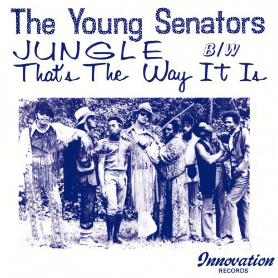


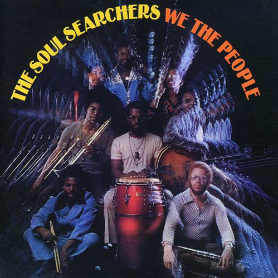





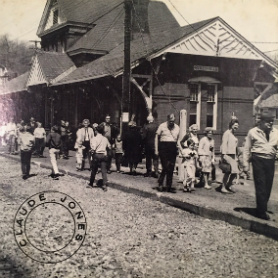

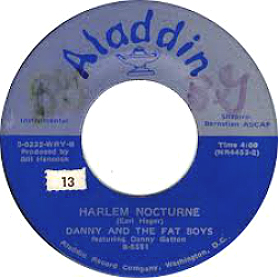




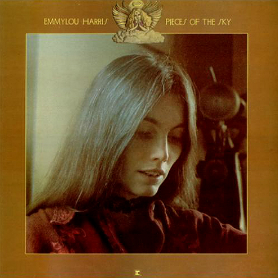








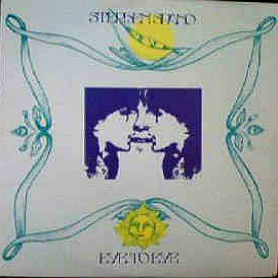
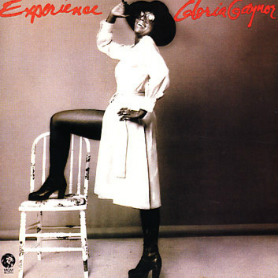

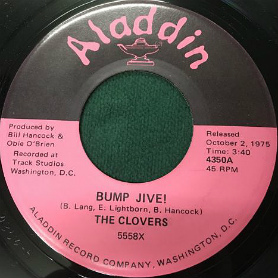

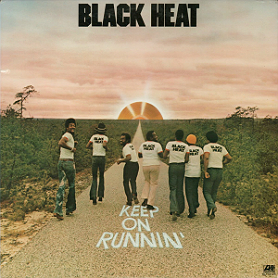


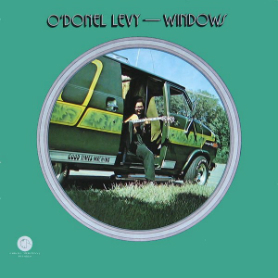

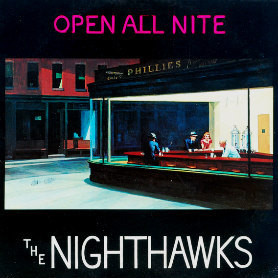







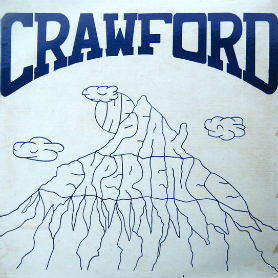




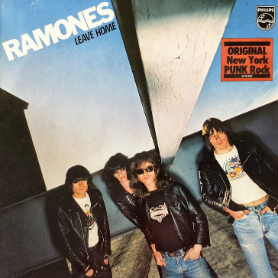


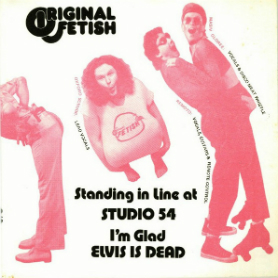

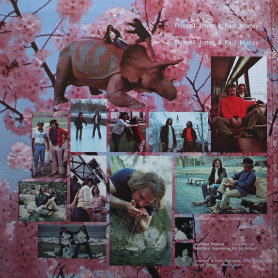


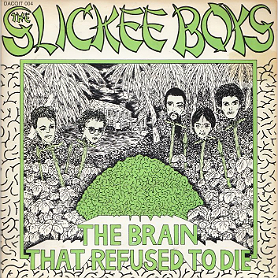
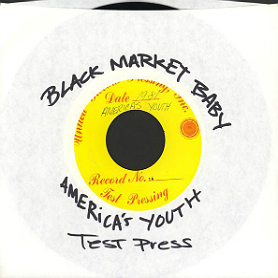

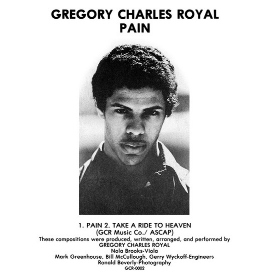
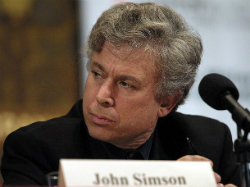
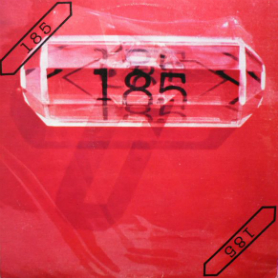
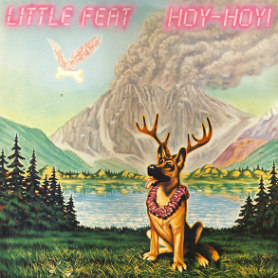

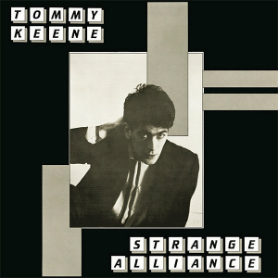
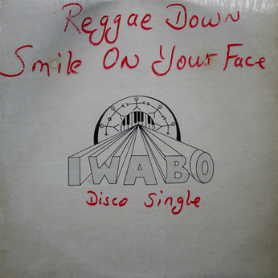
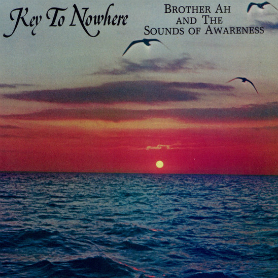
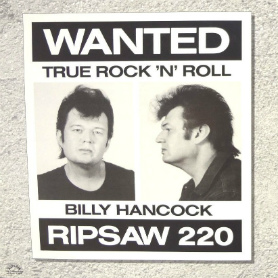









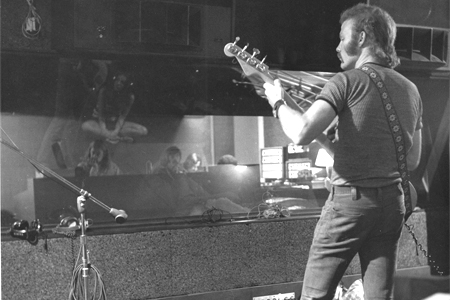
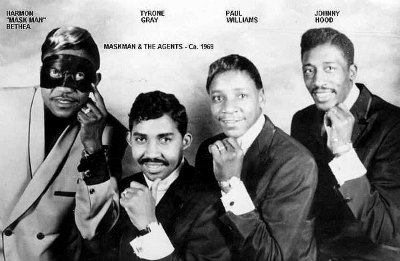

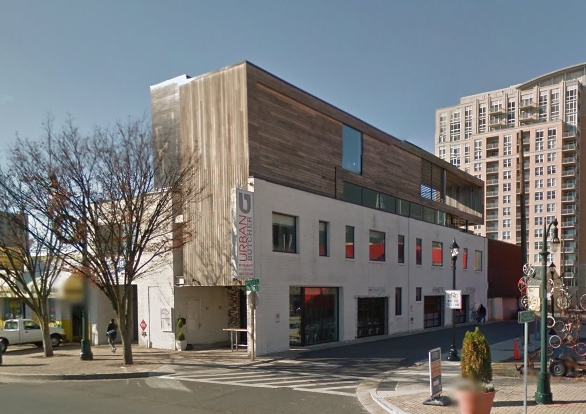


11 Responses
http://www.hmdb.org/marker.asp?marker=75761
Great article Chris! How about a future music event at Urban Butcher? My neighbor knows the owner….
I remember recording thee around 1972 with local “Chicago” style horn band “The New Breed”. Kurt Gibbons, the New Breeds leader, writer and arranger wrote a long, 20 minute track that we recorded there. I have a few pictures that were taken at that session
My name is Amy Kale.I recorded my first music at Track Recorders Inc. in 1984.
Engineered by Jim Crenca and produced by
Mitch Collins.My band was called the
Hijackers.I did a photo in Rolling Stones Magazine to promote Track Recorders.I still have the record that was first put on reel before Disc Mastered in N.Y..I meet many great musicians and was first aired on W.H.F.S Rock Radio.
I also wanted mention that I also sang with Root Boy Slim as well as he lived in my home off and on before his unfortunate passing.Mark Greenhouse was managing the studio when I was there.I still am a singer-songwriter who plays guitar and keyboards.I had Ron Hollaway on the saxophone on my record that I recorded at Track.I also had mentioned that I made so many great musicians/ friends there.Please keep me in mind for any information about Track and the great studio it was when I recorded my music there in 1984.Thanks.I still have my 45 with Track Recording on the back .I also have the Root Boy Slim 45.
Very interesting history of recorded music in the 1970s and 1980s. Especially some of the first “go-go” recordings with Chuck Brown. Thanks for the stories and the excellent LP album artwork accompanying this article!
I was one of the founders of Track Recorders and was pleasantly surprised to read your extensive history of the studio. A lot of hopes and dreams were represented by the artists who passed through its doors. Does anyone know how to contact Gerry Wyckoff, who bought the studio from me and my partners? I’d like to see how he’s doing after all these years. Thanks!
Hi Bill Tate,
Paul Sears here! I was on the team that carried the Neve out of the truck and up those stairs back in the early 1970s. That was a project!! I remember someone taking photos. Those would be fun to see! I ended up working on The Muffins 185 LP there in 1980 with Bill McCullough & Fred Frith when Gerry was the owner, and some other stuff with Mark Greenhouse later on. I am still making records. Hope you and yours are well. All the best!
I recorded at Track in December of 1978 we did about 40 hrs with my band Tour de Force.. my lead singer was Kathy special K Russell she was one of the Rootetts with Root Boy Slim…we where well on our way with much interest in the band….until drugs took it’s toll on the band ….by 1979 we where all but done..I was the only stright member and the main song writer in the band..needless to say it is now 2017 and I am the only living member of this unit..lot’s of great memories and and great songs that will never be heard again……..Tour de Force. was a very special band that should have been…..R.I.P I am still at it and have a new project ..Peter Michael’s Atomic Blusion check us out https://www.youtube.com/watch?v=xLnsWp5YG8o
Hi,
I’m ” Vernell Jennings ” originally from Silver Spring formerly Sharon Arnett. I left there in 1969 after doing some shows in D.C. and working with various bands. I came out to California and became The L.A. Blues Queen and worked with Willie Dixon for 9 years and the late Shakey Jake Harris. I managed Freddie Robinson and JJ Bad Boy Jones. I then moved to Hollywood and worked with Cliffie Stone and became a Booking Agent for many major artists and groups and own American Music Legends Publishing with ASCAP. I have 22 major music awards and a gold record. The only people I knew in Silver Spring was when ” The Turtles ” had lived there for a year and then another group called “Spliffs” out of Jamaica on Columbia Records. A lot of my artists were out of D.C. Originally. Jumpin Joe Phillips “Color Him Father, Al Bell at ICA Productions sent me up to Power House in N.Y. Anyway wish I had know you had something going back in the day, very interesting article I thought. When I was a young kid my first job was at Weller’s and that sign is what got me to your page, never expected to see this. Great Work !!
GREAT article, LOADS of insight and info! One small correction, Root Boy Slim’s Left For Dead was *released* in 1987, but it was recorded at Track in one session on the eve of the Shah fleeing Iran January 16th, 1979. Time zone-wise, I don’t know if it was the 15th or the 16th of January in WDC, I presume the evening of the 15th.